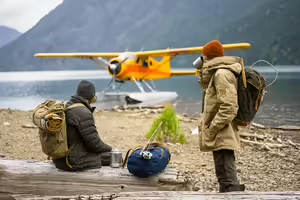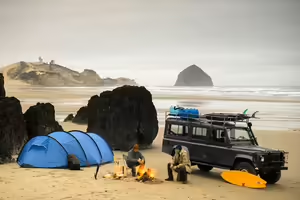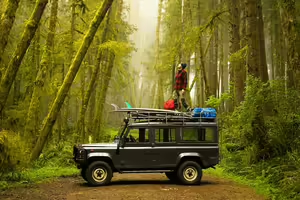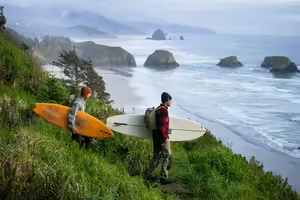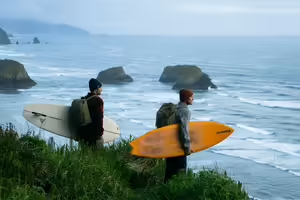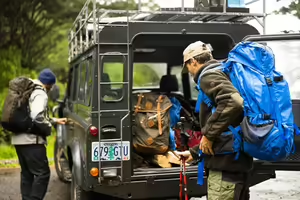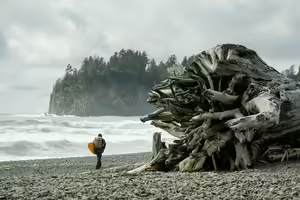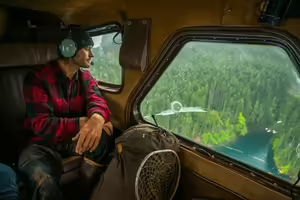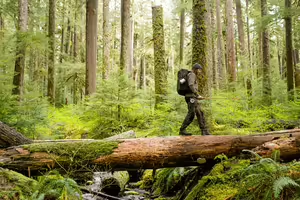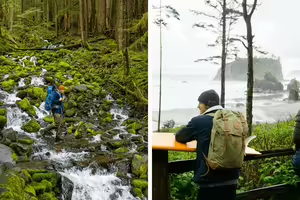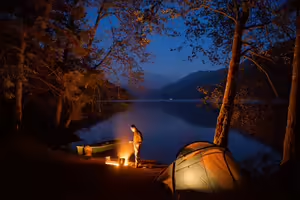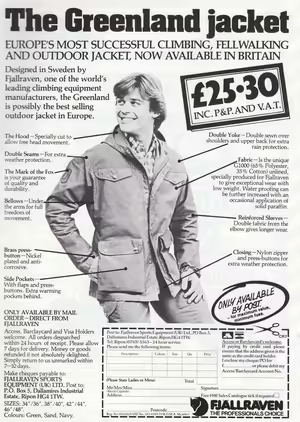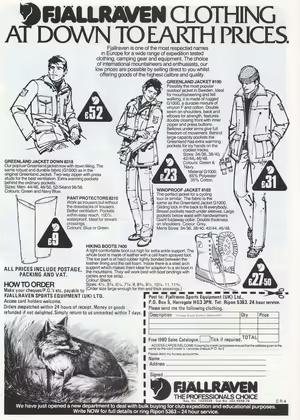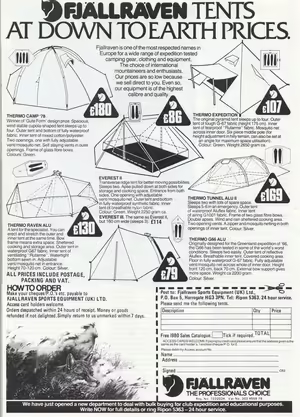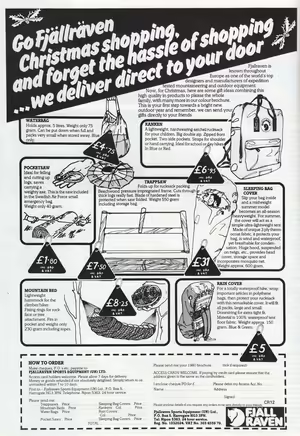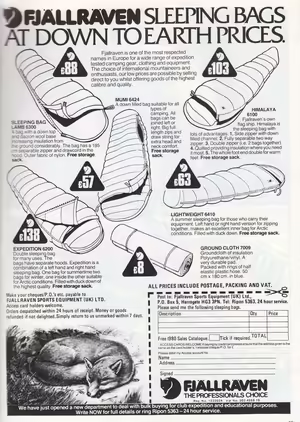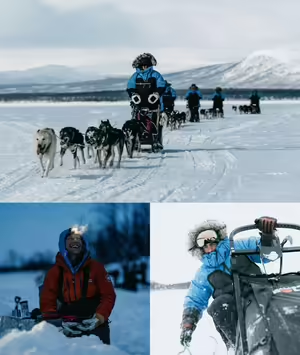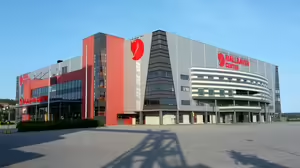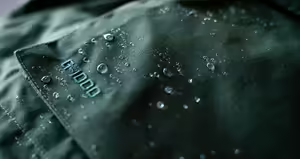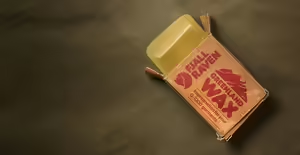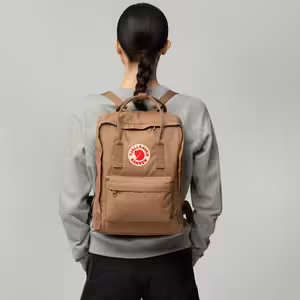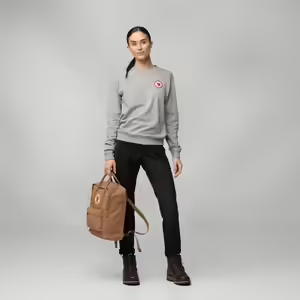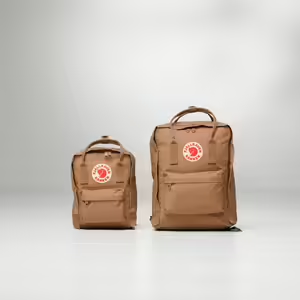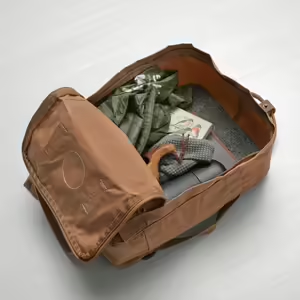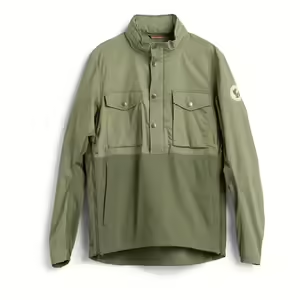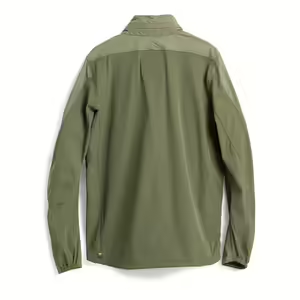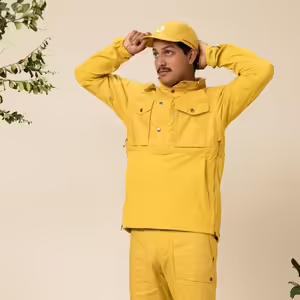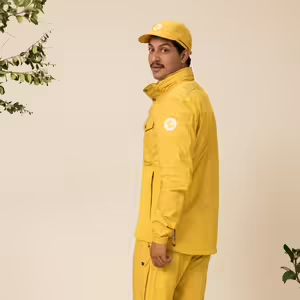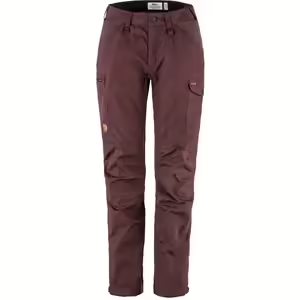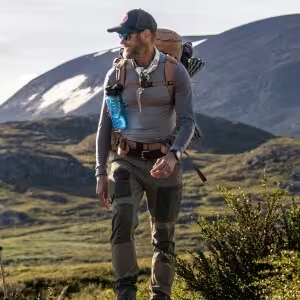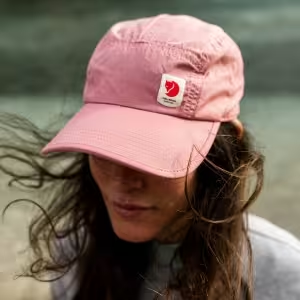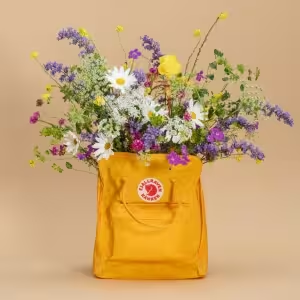Brand Fjällräven
| Fjällräven | |
| swed. arctic fox | |
|
|
|
| Founded | 1960 |
|---|---|
| Founder | Oke Nordeen (Åke Nordin) |
| Engineered | Sweden |
| Manufacturer country | China, South Korea |
| Head Office | Sweden, Ernsjöldsvik |
| Website | www.fjallraven.com |
Fjällräven is a Swedish company founded in 1960 by Åke Nordin in Östersund. It specializes in producing outdoor gear, including backpacks, clothing, and equipment. Fjällräven is renowned for its durable and functional designs. One of its most popular products is the Kånken backpack, released in 1978. Fjällräven clothing is widely used in Arctic expeditions due to its reliability and ability to withstand extreme conditions.
The Kånken backpack by Fjällräven is one of the most popular urban backpacks in the world. By 2008, over 3 million units had been sold, with an additional 300,000 produced annually.
History of the Fjällräven brand
In 1950, 14-year-old Åke Nordin, the future founder of the company, decided to design his own backpack. Preparing for a mountain hike, Åke found that contemporary backpacks were uncomfortable shapeless sacks with shoulder straps that required a severe forward lean to carry. These backpacks were inconvenient, causing sweating and back chills. Additionally, it was challenging for a slender teenager to find a model that fit properly due to the wide placement of straps on adult models.
Åke knew that positioning the load closer to the back and higher on the waist would make it easier to carry. He created a wooden frame in the shape of a ladder, attaching leather straps and a sturdy canvas sack sewn on his mother’s sewing machine. Åke's mother, Gunhild, the daughter of a tailor, had taught him to sew since he was 10 years old. He made the straps from thin calfskin and placed them in the most comfortable position for his build. This prototype became the basis for future innovations of the Fjällräven company.
Åke Nordin’s backpack turned out to be very comfortable: the straps didn’t pull on the shoulders, and the gaps allowed for good ventilation of the back. The rigid frame simplified packing and increased capacity. Åke and his friends tested the backpack on a mountain hike in Västerbotten, a popular tourist area. The backpack attracted attention, especially among the Sami reindeer herders (the Sami are a small Finno-Ugric people, indigenous to Northern Europe). One of them, Nils Olsson Sarri, became Åke’s first customer. A few years later, many locals in the Västerbotten mountains were familiar with the backpack, prompting Åke to consider mass production.
In 1954, Åke Nordin’s plans to produce backpacks had to be postponed due to his conscription into the army. He enrolled in the parachute school in Karlsborg, where he underwent a 15-month training course that included parachute jumps and wilderness survival. This experience strengthened his desire to create reliable gear. After his service and college graduation, Åke returned to the idea of manufacturing equipment. In 1960, he registered the company Fjällräven, setting up an office in his parents' apartment. He improved the backpack design, replacing the wooden frame with an aluminum one, and began selling the first serial models that same year. Åke personally advertised the products, demonstrating their advantages.
In 1963, changes in Swedish labor law, introducing a mandatory four-week vacation, gave a significant boost to Fjällräven’s development. The increased demand for backpacks contributed to the company's growth. Åke Nordin continued to test his gear on hikes. In the early 1960s, he began producing tents using lightweight synthetic fabrics. He developed a double-layer tent with a waterproof outer flysheet and a lightweight inner canopy, solving the condensation problem typical of tents at that time.
Åke Nordin’s invention of the double-layer tent had a significant impact on the market. The Fjällräven Thermo Tent model, released in 1964, became the first double-layer tent produced in Europe. It weighed only 1.4 kilograms, significantly lighter than comparable canvas models.
In 1966, Fjällräven tents underwent a field test in a ski expedition across Greenland. The expedition used one large tent and three small assault tents, as well as Fjällräven backpacks. The equipment performed brilliantly, leading to the development of new tent models such as Everest 2, Thermo Expedition, and Thermo 66 in the late 1960s and early 1970s.
The most significant outcome of Åke Nordin’s collaboration with the Greenland expedition was the G-1000 material and the clothing made from it. This material, consisting of a polyester and cotton blend, was initially intended for lightweight tents but turned out to be too heavy. Åke decided to use it for a jacket, which he tested on mountain hikes. The fabric was durable, lightweight, breathable, and quick-drying but needed moisture protection. By treating it with a mixture of paraffin and beeswax, Åke made the material water- and wind-resistant.
The material was named G-1000 ("G" stands for "Greenland") and was used to make Fjällräven Greenland jackets, which hit the market in 1968. These jackets, produced in various modifications, became the company’s hallmark. The G-1000 fabric and the clothing made from it remain popular and relevant even in the age of membranes and high-tech materials, thanks to their durability, lightness, and functionality.
In 1972, Fjällräven moved to its own factory in the industrial area of Örnsköldsvik, which today serves as the company's headquarters. In 1973, the first serial sleeping bag HAP (High Alpine Polar), an improved version of the Arctic model, was released. HAP featured a unique design with armholes and a drawstring at the bottom, allowing users to walk around the camp in the sleeping bag, and it became popular among tourists and mountaineers.
In 1975, the company introduced the Gyro backpack series with an improved frame and padded belt, making load carrying more comfortable. These backpacks were successful and produced for over 20 years. The Gyro frame is still manufactured and used by hunters, known as the Fire Brigade Frame HB.
In the late 1970s, Fjällräven developed and released its most recognizable product – the Kånken backpack. The idea for its creation came to Åke Nordin amid discussions about back health problems in Swedish society. Statistics from the 1970s showed that 80% of Swedes suffered from scoliosis due to using shoulder bags and briefcases for schoolbooks. Doctors recommended backpacks that distributed weight evenly. Åke created the Kånken, consulting with the Swedish Guide and Scout Association and considering the wishes of children, teenagers, and students, making the backpack popular among this audience.
Sales of the Kånken backpack began at the start of the 1978-1979 school year. The first batch of just 400 pieces was instantly sold out. By 1979, the Kånken’s success was astounding, with 30,000 units sold. Its simplicity, reliability, and convenience made it popular not only among schoolchildren but also among active city dwellers and travelers. Thanks to Kånken, Fjällräven gained worldwide fame, and its logo became widely recognizable.
In the 1980s, Fjällräven experienced a transitional phase, exploring new directions, including the production of stylish ski clothing. During this time, new products for mountain enthusiasts appeared infrequently, and the brand’s catalogs featured proven equipment models. In 1981, the first Gyro backpack with an integrated frame was released, and in 1989, the Silhuett sleeping bags were introduced, featuring a contoured shape that provided maximum freedom of movement and comfort.
In the 1990s, Fjällräven returned to its roots, updating its G-1000 fabric clothing collection. In collaboration with Lars Fält, founder of the Swedish Defence Forces Survival School, a durable Fält jacket was created. In 1992, the Akka four-season tent was released, which is still produced today.
In the mid-1990s, the company began producing outdoor footwear, including trekking boots and sandals. In 1994, Fjällräven opened its first brand stores in Stockholm and Oslo, later expanding to Amsterdam.
That same year, Fjällräven launched its first environmental program to preserve the arctic fox population. This program continues today, with the company implementing more and more eco-friendly technologies and materials in its production.
In addition to environmental initiatives, Fjällräven actively promotes hiking. The company organizes the annual international Fjällräven Classic hikes and has been hosting the Fjällräven Polar dog sled race since 1997.
In 1999, the iconic Vidda pants were released, featuring articulated cut, reinforced knees, and eight pockets, becoming popular among Scandinavian hikers and still produced today.
In the early 2000s, the company continued to refine its range of hiking gear, updating the Akka tent and releasing original backpack models, such as the urban DePendler backpack in 2004, which had a rigid frame allowing it to be used as a seat.
The year 2010 was significant for Fjällräven, marking its 50th anniversary. The Akka tent received a dome-shaped modification and several awards. The Keb clothing collection was released, combining G-1000 fabric and stretch nylon, with the Keb pants winning the "Outdoor Industry Award." Fjällräven became the most recognizable brand in Sweden, surpassing Nike, Calvin Klein, and Levi's.
In the 1980s and 1990s, Fjällräven began distributing its products beyond Sweden, first in Scandinavia and then across Europe. Åke wanted more people to explore nature. In 2005, the company launched Fjällräven Classic, a 110-kilometer hike through northern Sweden, to encourage people to love and appreciate the wilderness.
In 2017, Fjällräven returned to its roots with the Bergtagen mountaineering collection, inspired by the Swedish mountains. In 2018, the company updated the iconic Greenland jacket and the related collection, continuing its legacy of innovation.
Åke Nordin wanted to inspire people to explore nature. Today, Fjällräven continues this mission, with nature at the heart of the company. Fjällräven remains committed to valuing and preserving the natural world, reflecting its past, present, and future.
In the 1980s and 90s, Fjällräven began expanding its product distribution beyond Sweden, first to Scandinavia and then to Europe. Åke wanted more people to explore nature. In 2005, the company launched Fjällräven Classic, a 110-kilometer hike through northern Sweden, to encourage people to love and appreciate the wilderness.
In 2017, Fjällräven returned to its roots with the Bergtagen mountaineering collection, inspired by the Swedish mountains. In 2018, the company updated the iconic Greenland jacket and the related collection, continuing its legacy of innovation.
Film Fjällräven Polar
Fjällräven produced a documentary film, Fjällräven Polar, in 1999. The film showcases how 16 participants undertake a 350-kilometer dog sled race in polar conditions. The participants received the necessary gear from Fjällräven and the dogs, but no other assistance was provided. The film highlights the challenges and trials that ordinary people face in the extreme Arctic environment.

Fjällräven Initiatives
Dog Sled Race - Fjällräven Polar
In the early 1990s, Åke Nordin met Kenth Fjellborg, one of Sweden's leading dog sled racers who had participated in the Iditarod, the most challenging dog sled race across the harsh landscapes of Alaska. Inspired by this, Nordin decided to create a similar event in Sweden. In 1997, Fjällräven Polar was held for the first time in the Scandinavian Arctic. This event also provides Fjällräven with an opportunity to test clothing, tents, and other equipment in the winter conditions of northern Scandinavia.
Trekking Event - Fjällräven Classic
To inspire more people to go hiking, Åke Nordin created Fjällräven Classic in the early 21st century. It is not a competition but an opportunity to socialize with other hikers and enjoy the trek. In the first Swedish Classic in 2005, 152 people finished, and by 2015, this number had grown to 2136. Now, Fjällräven Classic is held in six countries: Sweden, Denmark, the USA, the UK, South Korea, and Germany.
Fjällräven Center
For many years, Åke Nordin supported the professional hockey club Modo Hockey from his hometown of Örnsköldsvik. In November 2009, Fjällräven acquired the naming rights to the club's home arena, which was called Fjällräven Center from January 2010 to August 2021.
Production Technologies
The Fjällräven brand is renowned for its innovative production technologies, which ensure high quality and durability of its products. These technologies are aimed at creating functional and sustainable items for outdoor activities and everyday use.
G-1000 Fabric
G-1000 is the primary fabric used in Fjällräven products, known for its durability and water-repellent properties. G-1000 consists of 65% polyester and 35% cotton, making it highly resistant to wear and weather conditions.
- G-1000 withstands intense use and is one of the most durable fabrics on the market.
- The fabric is treated with Greenland Wax, which can be reapplied to enhance its water-repellent properties.
- G-1000 offers a high degree of protection from UV rays.
Eco-Shell
Eco-Shell is an environmentally friendly membrane fabric developed by Fjällräven for creating waterproof and breathable clothing. Eco-Shell is made using recycled polyester and coated with PFC-free water-repellent treatment.
- Eco-Shell provides excellent protection from rain and snow.
- The fabric allows moisture to escape, ensuring comfort even during intense activities.
- Eco-Shell is made from recycled materials and is free from harmful chemicals.
Greenland Wax
Greenland Wax is a unique wax treatment used to enhance the water-repellent properties of G-1000 fabrics. The wax is easy to apply and allows the user to adjust the level of water protection according to the weather conditions.
- Greenland Wax is easy to apply and remove, enabling quick adaptation of clothing to current weather conditions.
- The wax can be used on any G-1000 fabric clothing, increasing its durability and protective properties.





